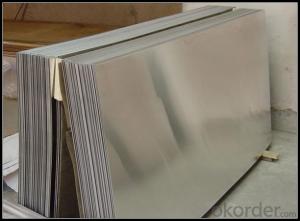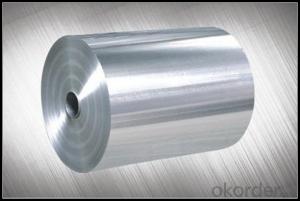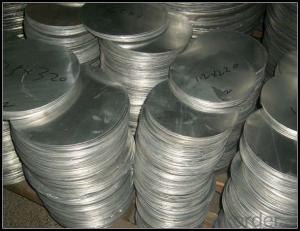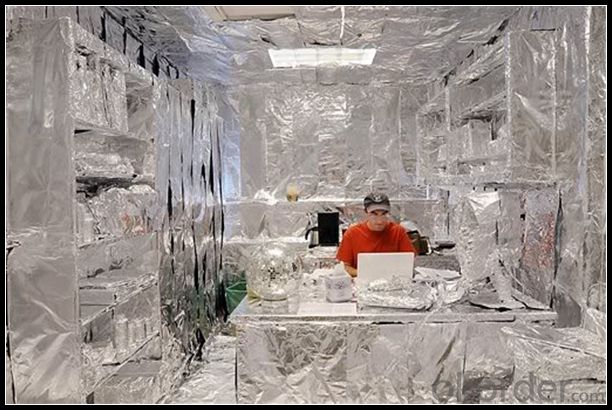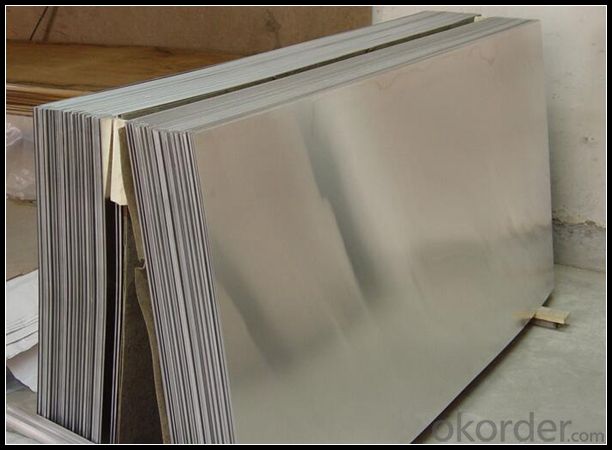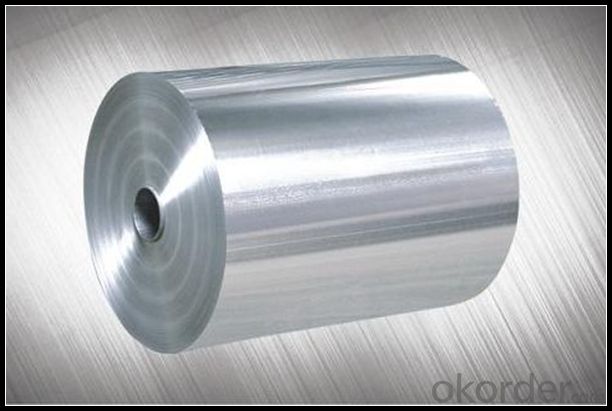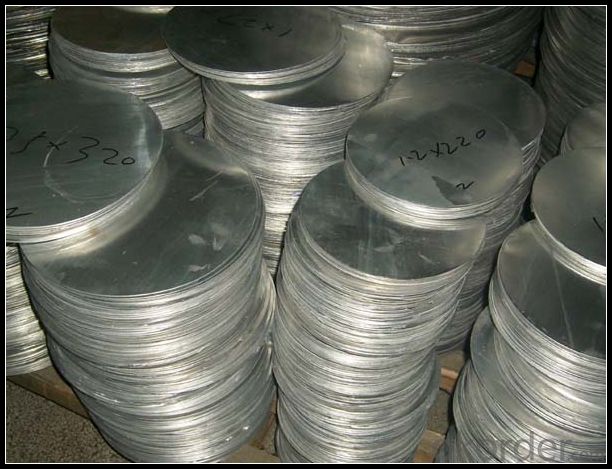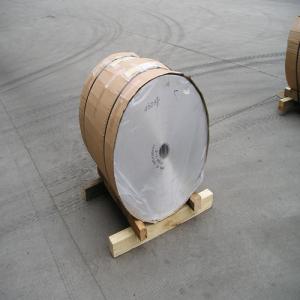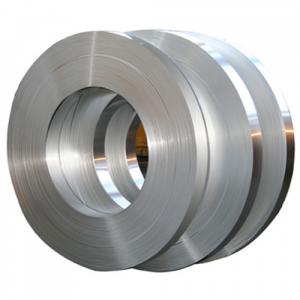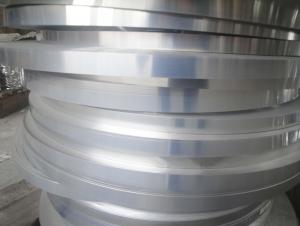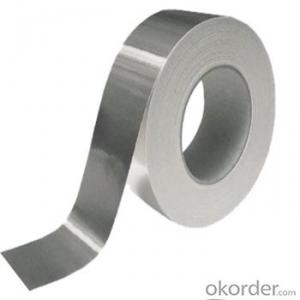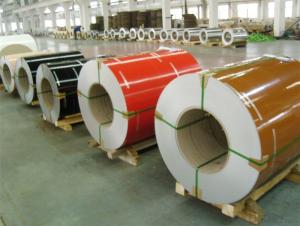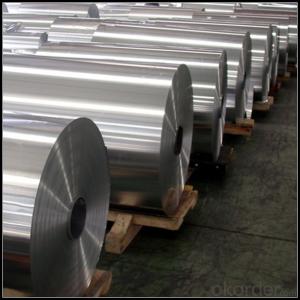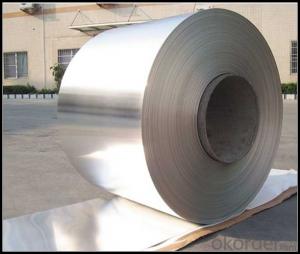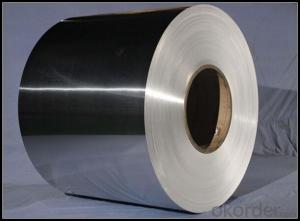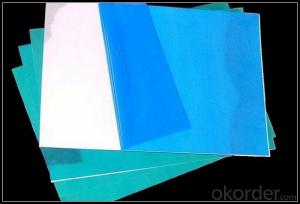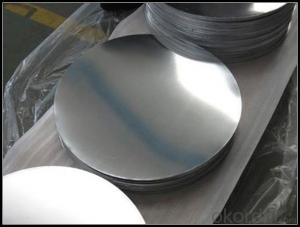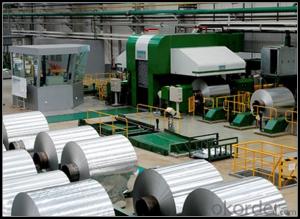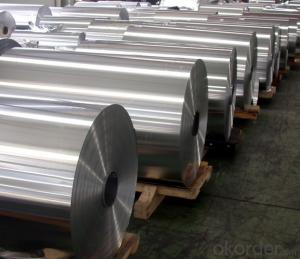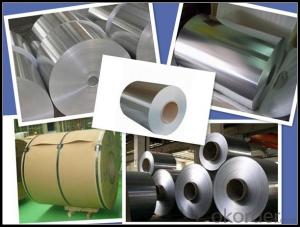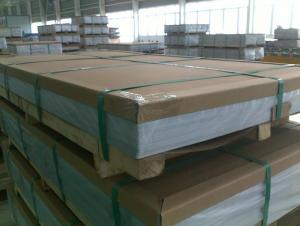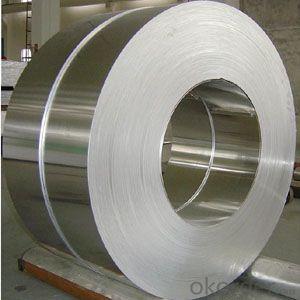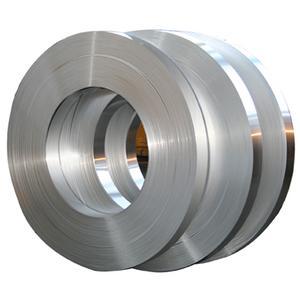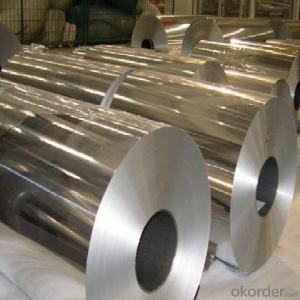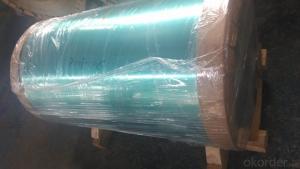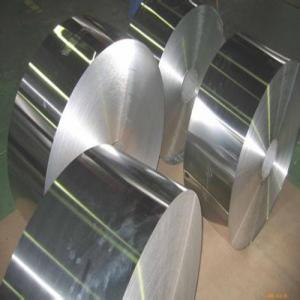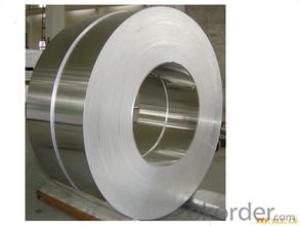1.8mm Aluminum Strips - China Aluminium Sheet and Coil A1050 H14
- Loading Port:
- Tianjin
- Payment Terms:
- TT OR LC
- Min Order Qty:
- 1 m.t.
- Supply Capability:
- 4999 m.t./month
OKorder Service Pledge
OKorder Financial Service
You Might Also Like
Specification
1. Specification of Aluminum
1) Alloy | 1050, 1060,1100, 3003 3004 3105 3005 5005 5052 etc |
2) Temper | O/H12/H14/H1/H18/H32/H34/H36/H38//H111/H112/H116/H321/T6/T651/T3/T351 etc |
3) Thickness | 0.1mm to 6mm |
4) Width | 20mm to 3300mm |
5) Coil weight | 100kgs to 6 tons depends on actual requirement |
6) Core material | Aluminum alloy |
7) Coil Inner diameter | 76mm, 152mm,or as required |
2. Application of Aluminum
(1).Interior: wall cladding, ceilings, bathrooms, kitchens and balconies, shutters, doors...
(2).Exterior: wall cladding, facades, roofing, canopies, tunnels,column covers , renovations...
(3).Advertisement: display platforms, signboards, fascia, shop fronts...
3. Feature of Aluminum
Aluminium is theoretically 100% recyclable without any loss of its natural qualities. According to the International Resource Panel'sMetal Stocks in Society report, the global per capita stock of aluminium in use in society (i.e. in cars, buildings, electronics etc.) is 80 kg (180 lb). Much of this is in more-developed countries (350–500 kg (770–1,100 lb) per capita) rather than less-developed countries (35 kg (77 lb) per capita). Knowing the per capita stocks and their approximate lifespans is important for planning recycling.
4. Certificate:
SGS and ROHS(if client request, paid by client), The non-electrolytic aluminium carbothermic process is potentially cheapest MTC(plant provided), Certificate of Origin(FORM A, FORM E, CO), Bureau Veritas and SGS (if client request, paid by client), CIQS certificate
5. Image of Aluminum
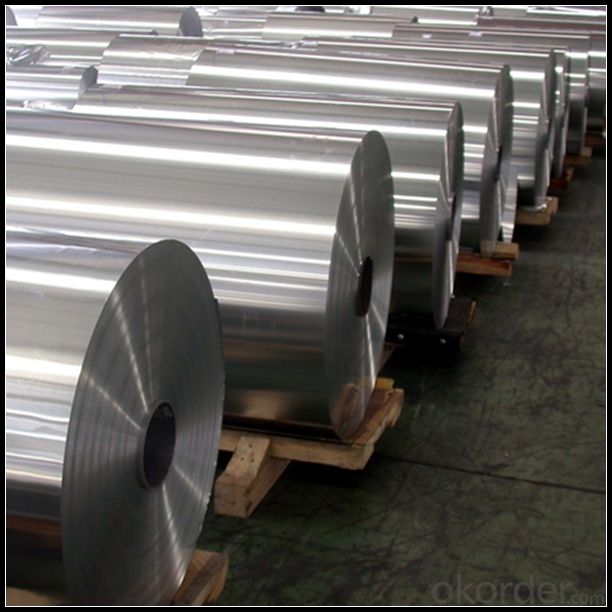
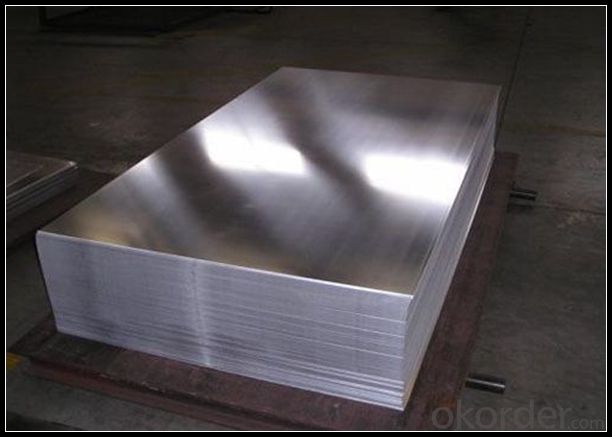
6. Our Service
1. Reply your enquiry in 24 working hours. |
2. OEM, buyer design, buyer label services provided. |
3. Exclusive and unique solution can be provide to our customer by our well traned and professional engineers and staffs. |
4. We can provide free sample for your check |
5. We have the certification of ISO 9001 |
6. Timely delivery |
7. Special discount and protection of sales area provided to our distributor. |
8. Good after-sale service. |
7. FAQ
Q: What is the produce prase? | ||||
A: Normally it would be 40days after received your deposit. | ||||
Q: Can you provide free samples? | ||||
A: Yes, free samples will be sent to you on freight at destination. | ||||
Q: Can I get your latest catalogue? | ||||
A: Yes, it will be sent to you in no time. | ||||
Q: What is the MOQ? | ||||
A: 3 tons | ||||
Q: What are your payment terms? | ||||
A: We accept L/C, D/A, D/P, T/T, West Union,etc. |
- Q: Is it possible to utilize aluminum strips for creating signs or banners?
- <p>Yes, you can use aluminum strips to make signs or banners. Aluminum is lightweight, durable, and resistant to weather, making it a popular choice for outdoor signage. It can be cut, bent, and shaped easily to create various designs. Additionally, aluminum strips can be painted or printed on, allowing for customization with text and graphics. However, ensure that the aluminum is of the appropriate thickness and quality for your specific project to maintain its structural integrity and longevity.</p>
- Q: This question asks for an explanation of the various types of aluminum cladding materials used in construction.
- <p>Aluminum cladding is a popular choice in construction for its durability and low maintenance. The different types include: 1. Aluminum Composite Material (ACM), which is lightweight and consists of two thin aluminum sheets with a non-aluminum core. 2. Aluminum Plate, a thicker and more rigid material used for structural applications. 3. Aluminum Extrusions, which are formed by pushing aluminum through a die to create specific shapes and profiles. 4. Aluminum Coil Coating, where aluminum coils are coated with a protective layer and used for roofing and siding. 5. Anodized Aluminum, which undergoes an electrochemical process to increase its resistance to wear and corrosion. Each type has specific applications and properties, making them suitable for different construction projects.</p>
- Q: Is it possible to use aluminum strips as a material for roofing purposes?
- <p>Yes, aluminum strips can be used for roofing. They are known for their durability, corrosion resistance, and lightweight properties, making them a popular choice for metal roofing. Aluminum roofing strips are low maintenance, energy-efficient, and can be recycled, offering environmental benefits. They are also resistant to harsh weather conditions and can last for several decades with proper installation and care.</p>
- Q: What specific tools are required for the installation of aluminum strips on a roof or wall?
- <p>To install aluminum strips on a roof or wall, you generally need a few special tools. These include a measuring tape for precise measurements, a level to ensure the strips are straight, a drill for making holes, and screws or nails for securing the strips. A utility knife may be required for cutting the strips to size, and a pry bar can help with positioning. Safety equipment like gloves and goggles is also essential to protect against sharp edges and debris.</p>
- Q: What benefits can be gained from using aluminum strips as a siding material for buildings?
- <p>Aluminum strips for siding offer several advantages, including durability, low maintenance, and resistance to rust and corrosion. They are lightweight, which makes installation easier and quicker. Aluminum siding is also energy-efficient, as it can help to insulate a building, reducing energy costs. Additionally, it is recyclable and environmentally friendly, contributing to sustainability efforts. The material is available in a wide range of colors and styles, allowing for great flexibility in design. It is also resistant to harsh weather conditions, making it a popular choice for various climates.</p>
- Q: What steps or criteria should I use to determine if an aluminum strip is suitable for my specific application?
- <p>To determine if an aluminum strip is safe for your application, consider the following: 1) Check the alloy type for its specific properties like strength, corrosion resistance, and temperature tolerance. 2) Ensure it meets the required mechanical properties such as tensile strength and yield strength. 3) Verify its chemical composition to avoid any adverse reactions with other materials in your application. 4) Confirm its compliance with industry standards relevant to your field. 5) Conduct tests for fatigue, stress corrosion cracking, and other relevant properties. 6) Consult with suppliers or material scientists for their recommendations based on your application's specific needs.</p>
- Q: This question asks for a comparison of the pros and cons of using aluminum strips as a material for exterior cladding on buildings.
- <p>Aluminum strips for exterior cladding offer several advantages, including their lightweight nature, which reduces structural load. They are also resistant to corrosion, making them suitable for various climates and weather conditions. The ease of installation and maintenance is another benefit, as aluminum is less prone to damage and requires minimal upkeep. Additionally, aluminum strips can be easily recycled, contributing to sustainability efforts. However, there are disadvantages such as the potential for thermal expansion, which can lead to buckling or distortion over time. Aluminum may also dent or scratch more easily than some other materials, and it can conduct heat and cold, potentially leading to energy inefficiency. Lastly, while it is cost-effective in the long run, the initial installation cost can be higher compared to some traditional materials.</p>
- Q: This question asks for an overview of the steps involved in the manufacturing of aluminum components used in vehicles.
- <p>The production process of automotive aluminum parts typically involves several key steps: material selection, design, casting or forging, machining, heat treatment, surface treatment, and quality control. Aluminum is chosen for its lightweight and high strength properties. The design phase involves creating detailed plans for the part. Casting or forging shapes the aluminum into rough forms. Machining refines these forms to precise specifications. Heat treatment enhances strength and durability. Surface treatments protect against corrosion and wear. Finally, quality control ensures each part meets industry standards before it is used in vehicles.</p>
- Q: This question asks for the distinction between two types of aluminum products: strips and profiles.
- <p>Aluminum strips are flat, thin pieces of aluminum, often used for applications requiring flexibility or where a thin cross-section is needed. They are typically used in packaging, electrical components, and construction. Aluminum profiles, on the other hand, are extruded shapes with a more complex cross-section, such as bars, tubes, angles, or channels. These profiles are used in structural applications, furniture, and various mechanical components where strength and specific shapes are required. The main difference lies in their form and application; strips are for flat, thin uses, while profiles are for more robust, structural uses.</p>
- Q: This question asks for the proper maintenance procedures for an aluminum strip roof to ensure its longevity and functionality.
- <p>To maintain an aluminum strip roof properly, follow these steps: Regularly inspect the roof for any signs of damage or wear, such as dents, rust, or loose seams. Clean the roof surface gently with a soft brush or cloth to remove debris and prevent scratches. Avoid using harsh chemicals or abrasive materials that could damage the aluminum. Ensure proper drainage to prevent water pooling, which can lead to corrosion. If leaks occur, address them promptly to prevent further damage. Apply a protective coating if needed to enhance durability and UV resistance. Periodically check the fasteners and secure any that have become loose. For major repairs or replacements, consult with a professional roofer to ensure the job is done correctly and safely.</p>
Send your message to us
1.8mm Aluminum Strips - China Aluminium Sheet and Coil A1050 H14
- Loading Port:
- Tianjin
- Payment Terms:
- TT OR LC
- Min Order Qty:
- 1 m.t.
- Supply Capability:
- 4999 m.t./month
OKorder Service Pledge
OKorder Financial Service
Similar products
Hot products
Hot Searches
Related keywords

